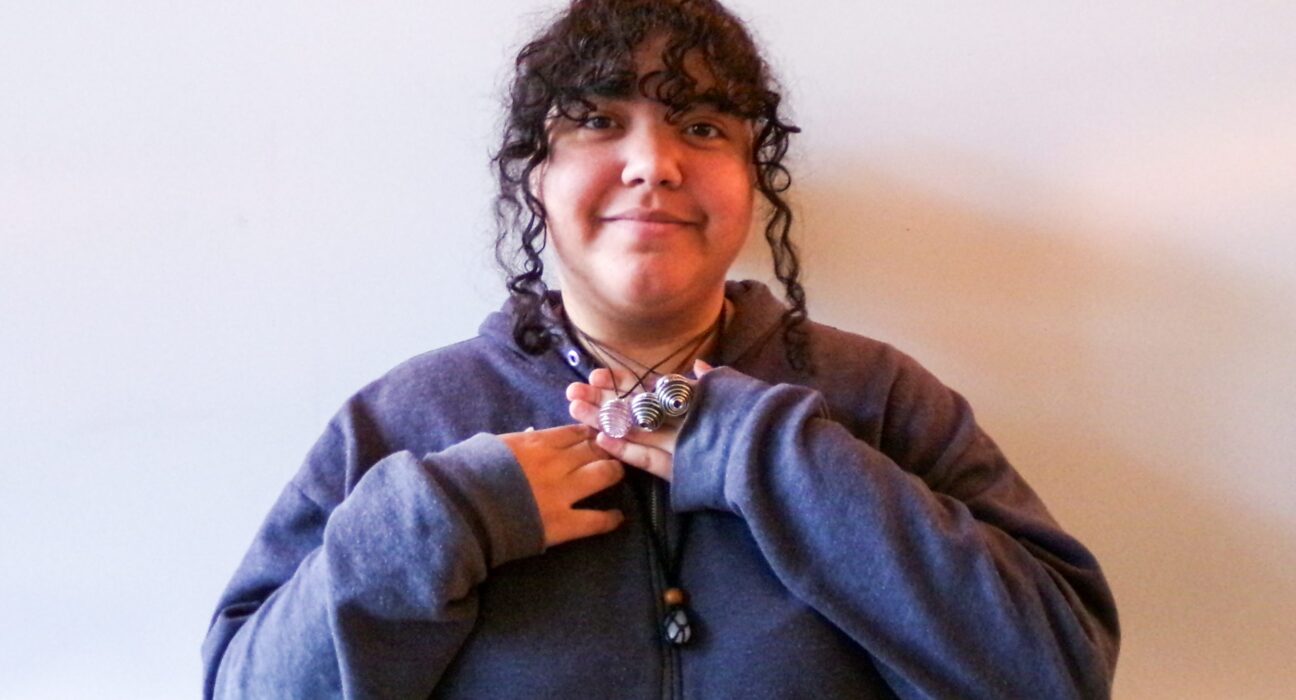Many artists at Berkeley High School have found a way to turn their art into a commission-based form of income. Prints, jewelry, crochet, and digital art are all mediums in which students offer their services. By accepting commissions, artists have creative freedom with an added incentive: making money.
“People are willing to pay a lot for custom-made jewelry, or just any jewelry in general,” BHS junior Marisol Marcucci said. “Especially if they know it’s handmade, they’re willing to give more or even tips.”
Marcucci makes jewelry, typically selling beaded and crystal wire jewelry. But that’s not to say that she doesn’t experiment with new items. “I try to be versatile and make different things even if I’m not totally good at it,” she said.
Since middle school, Marcucci has been making jewelry. As she expanded her skills and materials, her art form grew from a hobby to a source of income.
Despite having created jewelry for years now, Marcucci easily avoids feeling art block by switching things up. “I’m always trying to do a new style,” she said, “so for me it’s easy to avoid burnout when there’s so many ways to create jewelry.”
BHS junior Amalia Kelterborn takes commissions for a variety of crafts, including prints and painted CDs. “Sometimes it just comes to me,” she said. “I just have an idea, and then I just draw, and it happens.” Inspiration can come from many different places, but Kelterborn feels especially inspired by fellow artists. “I’m just inspired by other artists,” she said, “including online or when I go to conventions because they’re actual professional artists. I’m inspired by their creativity and also by my peers around me.”
Commissioning art comes with its own difficulties, and artists have to find their own way to persevere. “I’ve heard from artists that some people are scammers or want weird stuff that goes against the artist’s boundaries,” Kelterborn said. “And some people don’t get it. Some people are rude and are like: ‘this is not how I wanted it,’ or price it way too low, or ask ‘oh can you do this for free?’ No, that’s not the point of commissions.”
“I realized that I enjoy making (art) a lot more than I enjoy the business side,” said BHS sophomore Lola Lelchuk. Lelchuk crochets a variety of wearable items. “I’ve crocheted a lot of hats, but I also have made a lot of bags, skirts, and tops.” While she loves creating new pieces, she finds the business aspect of commissioning to be more challenging.
“It’s really nice when other people like what you did and enjoy it, but it’s hard because it takes a lot of time,” Lelchuk said.
With the recent surge of AI usage, artists like Kelterborn have struggled to find clients. AI can instantly generate art tailored to any request, which can be an issue for the artists that rely on selling commissions. According to Kelterborn, “Commissions have been going down since people are like ‘oh hey I don’t need artists to make this I can just make it myself.’ But they’re not really making it themselves.”
Costs and pricing bring up an added challenge for artists as well. “Pricing your worth, like what your jewelry is worth, is definitely a hard topic because there’s always backlash,” Marcucci said. “Like ‘you’re charging too much.’ But (my art) is handmade.”
Balancing the hours worked and the cost of supplies can create a challenge, particularly when the ultimate goal is to make profit. “Supplies for jewelry are really expensive,” Marcucci said, “like getting new beads and getting new wiring. So art gets hard to maintain, especially when there aren’t many sales coming in.” For commission-based artists, material costs can greatly diminish any potential profit.
Luckily, Marcucci doesn’t make art for the profit alone. “Sometimes I like to just make things for (myself)… or gift-giving,” she said. “Because even though I’m not getting anything back, it helps me to get in that creative space and know that I’m gonna create something nice.”
Kelterborn finds the process of undergoing art commissions rewarding. “You’re trying to do your best, and trying to make the commission as personal and good-looking as possible,” she said. “You also try to improve your own art.”
Making and selling artwork is beneficial in many ways, and artists like Kelterborn strongly encourage students to put their skills out into the world. “Do it,” she said. “It’s worth it. It takes a lot of time and effort, and it’s really hard. But (accepting art commissions) is fun and you should do it.”

